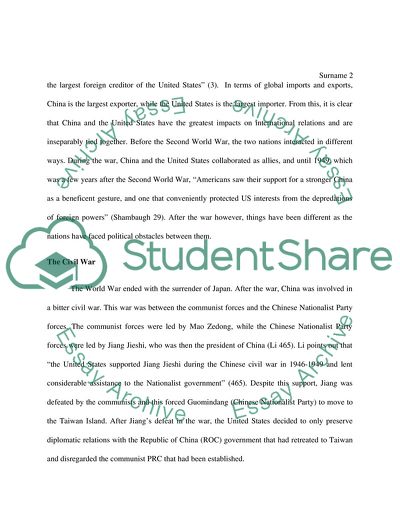Cite this document
(The Relationship between China and the United States after the Second World War Report Example | Topics and Well Written Essays - 3750 words, n.d.)
The Relationship between China and the United States after the Second World War Report Example | Topics and Well Written Essays - 3750 words. https://studentshare.org/history/1823093-write-the-relationship-between-china-and-united-state-after-world-war2
The Relationship between China and the United States after the Second World War Report Example | Topics and Well Written Essays - 3750 words. https://studentshare.org/history/1823093-write-the-relationship-between-china-and-united-state-after-world-war2
(The Relationship Between China and the United States After the Second World War Report Example | Topics and Well Written Essays - 3750 Words)
The Relationship Between China and the United States After the Second World War Report Example | Topics and Well Written Essays - 3750 Words. https://studentshare.org/history/1823093-write-the-relationship-between-china-and-united-state-after-world-war2.
The Relationship Between China and the United States After the Second World War Report Example | Topics and Well Written Essays - 3750 Words. https://studentshare.org/history/1823093-write-the-relationship-between-china-and-united-state-after-world-war2.
“The Relationship Between China and the United States After the Second World War Report Example | Topics and Well Written Essays - 3750 Words”. https://studentshare.org/history/1823093-write-the-relationship-between-china-and-united-state-after-world-war2.


